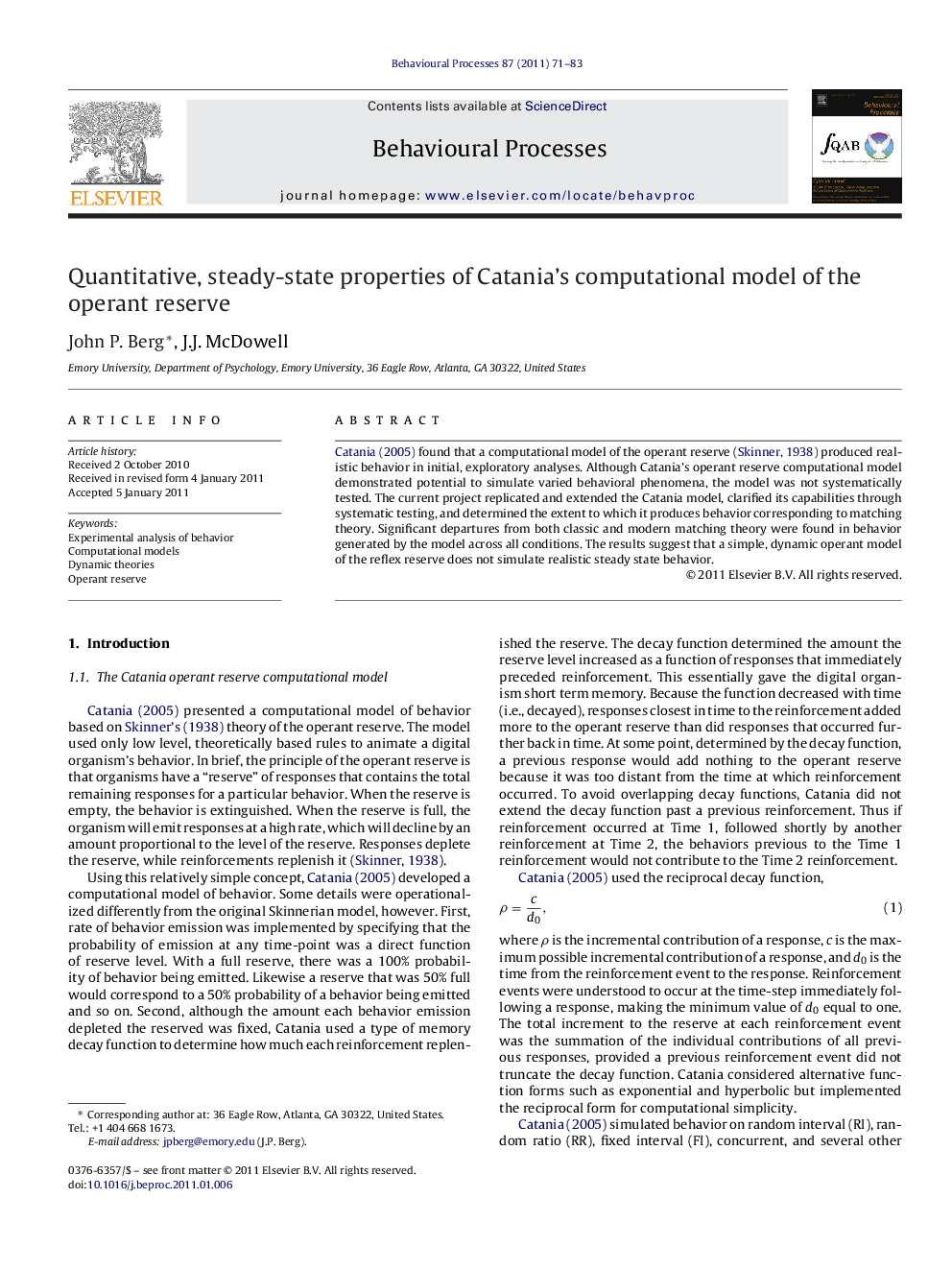| Article ID | Journal | Published Year | Pages | File Type |
|---|---|---|---|---|
| 2427051 | Behavioural Processes | 2011 | 13 Pages |
Catania (2005) found that a computational model of the operant reserve (Skinner, 1938) produced realistic behavior in initial, exploratory analyses. Although Catania's operant reserve computational model demonstrated potential to simulate varied behavioral phenomena, the model was not systematically tested. The current project replicated and extended the Catania model, clarified its capabilities through systematic testing, and determined the extent to which it produces behavior corresponding to matching theory. Significant departures from both classic and modern matching theory were found in behavior generated by the model across all conditions. The results suggest that a simple, dynamic operant model of the reflex reserve does not simulate realistic steady state behavior.
Research highlights► A computational model based on B.F. Skinner's (1938) concept of the reflex reserve did not produce behavioral data consistent with matching. ► Overmatching was evident in the majority of behavioral data from the operant reserve model. ► A simple linear memory function outperformed simple reciprocal, exponential, and hyperbolic decay functions.
